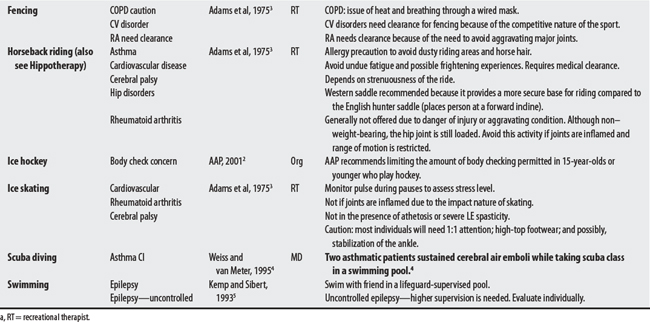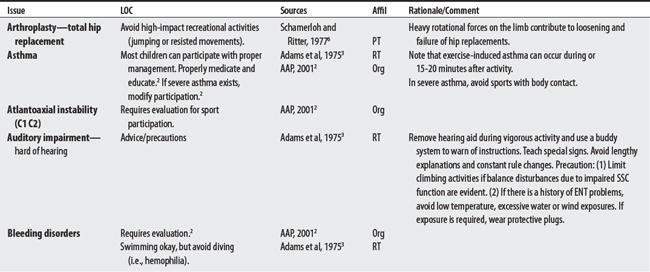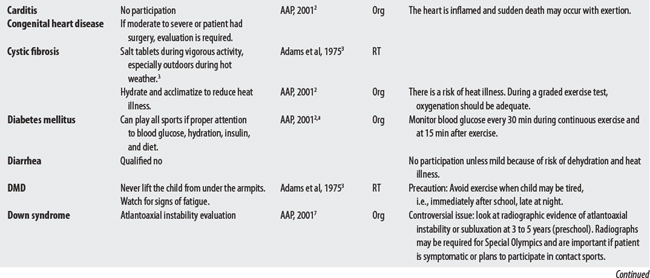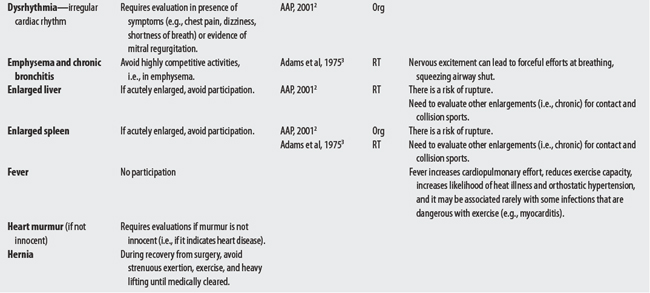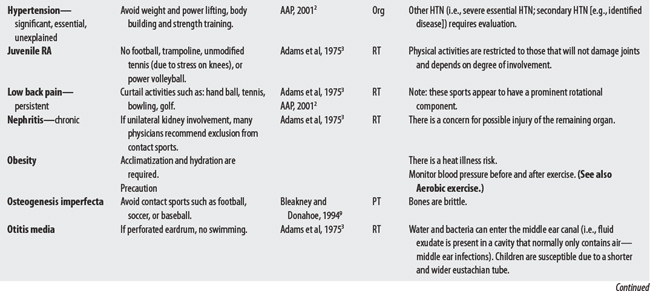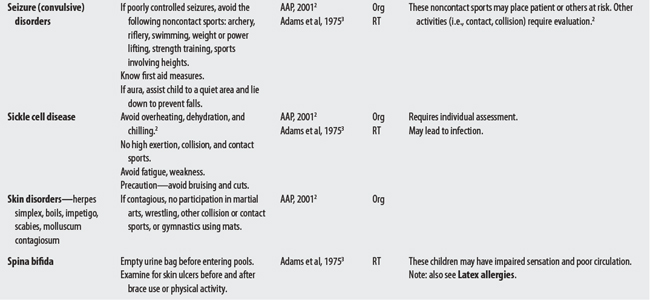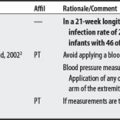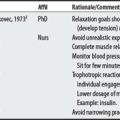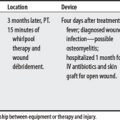Chapter 19 Sport Activities
Sports—or to make oneself “merry”—is a pastime that serves as a pleasing or amusing diversion.1 Concerns for sports participation for individuals with physical disabilities are listed below by sport and then by diagnosis. The American Academy of Pediatrics2 has issued recommendations for children and preadolescents with medical conditions that affect sports participation; some require further evaluation of risk. Adams’ recommendations,3 although somewhat dated, offer insightful guidelines on game and sport participation for physically challenged individuals from a recreational perspective.
1 Webster’s third new international dictionary. Springfield (MA: Merriam-Webster, 1981.
2 American Academy of Pediatrics Committee on Sports Medicine and Fitness and Committee on School Health. Medical conditions affecting sports participation. Pediatrics. 2001;107(5):1205-1209.
3 Adams RC, Daniels AN, Rullman L. Games, sports, and exercise for the physically handicapped. Philadelphia: Lea & Febiger, 1975.
4 Weiss L, Van Meter K. Cerebral air embolism in asthmatic scuba divers in a swimming pool. Chest. 1995;107(6):1653-1654.
5 Kemp AM, Sibert JR. Epilepsy in children and the risk of drowning. Arch Dis Child. 1993;68(5):684-685.
6 Schamerloh C, Ritter M. Prevention of dislocation or subluxation of total hip replacements. Phys Ther. 1977;57:1028.
7 American Academy of Pediatrics, Committee on Genetics. Health supervision for children with Down’s syndrome. Pediatrics. 2001;107(2):442-449.
8 Bleakney DA, Donahoe M. Osteogenesis imperfecta. In: Campbell SK, Palisono R, Vander Linden DW, editors. Physical therapy for children. Philadelphia: Saunders, 1994.


